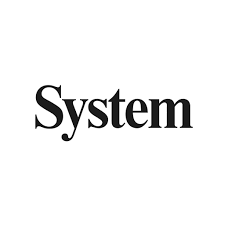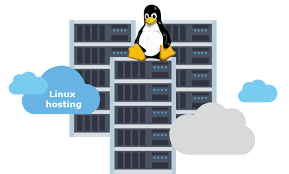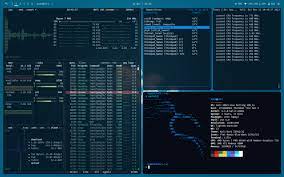Affordable Linux VPS Hosting: Unleashing the Power of Cheap Solutions
The Benefits of Cheap Linux VPS Hosting
Virtual Private Servers (VPS) have become a popular choice for individuals and businesses looking for a flexible and cost-effective hosting solution. When it comes to VPS hosting, Linux-based servers are often preferred for their stability, security, and customizability. In this article, we explore the benefits of opting for cheap Linux VPS hosting.
Cost-Effective Solution
One of the primary advantages of choosing cheap Linux VPS hosting is its affordability. Linux is an open-source operating system, which means that there are no licensing fees associated with using it. This cost-saving benefit is passed on to users in the form of lower hosting prices, making Linux VPS an attractive option for those on a budget.
Reliability and Stability
Linux has a reputation for being a stable and reliable operating system. This stability translates to the performance of your VPS server, ensuring that your website or applications run smoothly without unexpected downtime or crashes. With cheap Linux VPS hosting, you can trust that your server will maintain high uptime rates and provide a consistent user experience.
Customizability and Flexibility
Linux offers a high level of customizability, allowing users to tailor their server environment to meet specific requirements. Whether you need to install custom software, configure security settings, or optimise performance parameters, cheap Linux VPS hosting gives you the flexibility to make these adjustments easily. This level of control empowers users to create a hosting environment that suits their unique needs.
Security Features
Security is paramount when it comes to online operations. Cheap Linux VPS hosting provides robust security features that help safeguard your data and protect your server from potential threats. From built-in firewalls to regular security updates, Linux offers comprehensive security measures that give users peace of mind knowing their digital assets are well-protected.
Community Support
Linux has a vast community of developers and enthusiasts who actively contribute to its ongoing development and support. When you opt for cheap Linux VPS hosting, you gain access to this knowledgeable community that can offer assistance, troubleshooting tips, and guidance on how to maximise your server’s potential. The collaborative nature of the Linux community ensures that help is always available when you need it.
In Conclusion
Cheap Linux VPS hosting offers an array of benefits that make it an appealing choice for individuals and businesses seeking reliable and affordable hosting solutions. With its cost-effectiveness, stability, customizability, security features, and active community support, cheap Linux VPS hosting provides everything you need to establish a strong online presence without breaking the bank.
9 Cost-Saving Strategies for Choosing an Affordable Linux VPS Hosting
- Compare different hosting providers to find the best deal.
- Look for promotional offers or discounts when signing up for a VPS.
- Consider opting for a longer billing cycle to get a lower monthly rate.
- Choose a VPS plan with just the right amount of resources you need to save costs.
- Check if the hosting provider offers free migration services to avoid extra charges.
- Monitor your resource usage regularly and adjust your plan accordingly to avoid overpaying.
- Utilize open-source control panels like Webmin or Virtualmin to manage your VPS for free.
- Explore community forums and online tutorials for cost-effective solutions and troubleshooting tips.
- Consider using serverless technologies or containerization to optimize resource usage and reduce costs.
Compare different hosting providers to find the best deal.
When considering cheap Linux VPS hosting, it is advisable to compare offerings from different hosting providers to secure the best deal. By conducting a thorough comparison, you can evaluate factors such as pricing, features, performance, customer support, and reliability. This process allows you to make an informed decision based on your specific requirements and budget, ensuring that you find a hosting provider that not only offers affordability but also meets your needs for stability and support. Comparing different hosting providers empowers you to choose the best cheap Linux VPS solution that aligns with your goals and expectations.
Look for promotional offers or discounts when signing up for a VPS.
When considering cheap Linux VPS hosting options, it is advisable to keep an eye out for promotional offers or discounts when signing up for a VPS. Many hosting providers frequently run promotions that can help you save money on your initial subscription or provide additional benefits such as extra storage or bandwidth. By taking advantage of these promotional offers, you can maximise the value of your investment in a Linux VPS and potentially enjoy enhanced features at a lower cost. Be sure to explore different hosting providers and compare their promotional deals to find the best offer that aligns with your hosting needs and budget.
Consider opting for a longer billing cycle to get a lower monthly rate.
When exploring cheap Linux VPS hosting options, it is advisable to consider opting for a longer billing cycle to benefit from a lower monthly rate. By committing to a longer-term plan, you can take advantage of discounted rates that result in cost savings over time. This approach not only helps reduce your monthly expenses but also provides greater financial predictability and stability in managing your hosting budget effectively.
Choose a VPS plan with just the right amount of resources you need to save costs.
When considering cheap Linux VPS hosting, it is advisable to select a VPS plan that aligns with your resource requirements to optimise cost savings. By choosing a plan that offers precisely the amount of resources you need, such as CPU, RAM, and storage capacity, you can avoid overpaying for unused resources. This tailored approach not only helps in reducing costs but also ensures that you have sufficient resources to support your website or applications effectively. Making an informed decision based on your specific needs can lead to a more cost-effective and efficient hosting solution.
Check if the hosting provider offers free migration services to avoid extra charges.
When considering cheap Linux VPS hosting, it is advisable to check if the hosting provider offers free migration services. This can help you avoid additional charges and streamline the process of transferring your website or applications to a new server. Free migration services provided by the hosting provider can save you time and money, ensuring a smooth transition without any unexpected costs. By taking advantage of this service, you can make the most of your budget-friendly VPS hosting plan while benefiting from hassle-free migration assistance.
Monitor your resource usage regularly and adjust your plan accordingly to avoid overpaying.
It is essential to monitor your resource usage regularly when utilising cheap Linux VPS hosting. By keeping a close eye on your server’s resource consumption, you can identify any inefficiencies or spikes in usage that may lead to overpaying for resources you do not need. Adjusting your hosting plan accordingly based on your actual usage can help optimise costs and ensure that you are only paying for the resources you require, ultimately maximising the value of your hosting investment.
Utilize open-source control panels like Webmin or Virtualmin to manage your VPS for free.
By utilising open-source control panels such as Webmin or Virtualmin, you can effectively manage your cheap Linux VPS without incurring additional costs. These user-friendly tools offer a range of features to simplify server administration tasks, from configuring settings to monitoring performance. With Webmin or Virtualmin, you can take advantage of a free and efficient solution to streamline the management of your VPS, ensuring smooth operation and optimal performance without the need for expensive proprietary software.
Explore community forums and online tutorials for cost-effective solutions and troubleshooting tips.
For cost-effective solutions and troubleshooting tips when utilising cheap Linux VPS hosting, it is highly beneficial to explore community forums and online tutorials. These resources provide valuable insights shared by experienced users and experts within the Linux community. By tapping into these platforms, users can access a wealth of knowledge, practical advice, and step-by-step guides that can help address any issues that may arise while maximising the potential of their Linux VPS hosting setup.
Consider using serverless technologies or containerization to optimize resource usage and reduce costs.
When exploring the realm of cheap Linux VPS hosting, it is advisable to consider leveraging serverless technologies or containerization to maximise resource efficiency and minimise expenses. By embracing serverless architectures or containerisation, users can dynamically scale resources based on demand, leading to optimal resource utilisation and cost savings. These modern approaches not only enhance performance but also streamline operations, making cheap Linux VPS hosting a more efficient and cost-effective solution for hosting needs.












